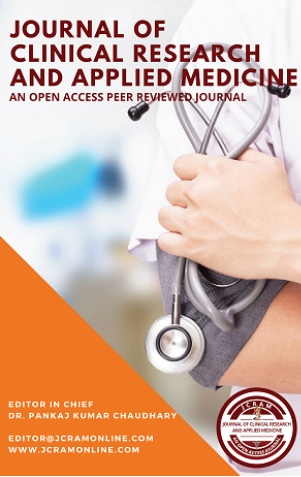Anesthetic Management of a Patient with Goldenhar Syndrome Undergoing Emergency Caesarean Section: A Case Report
DOI:
https://doi.org/10.5530/jcram.1.1.7Keywords:
Goldenhar syndrome, Caesarean, Aesthetic managementAbstract
Goldenhar Syndrome (GS) is a relatively common developmental disorder characterized by craniofacial anomalies in association with vertebral, cardiac, renal, and central nervous system defects. A 24-year-old female patient reported to the Department of Obstetrics and Gynecology of with chief complaints of amenorrhea for 9 months and pain in abdomen. A provisional diagnosis of Goldenhar syndrome was made which was later confirmed by radiographic investigation Despite the presence of a difficult airway, awake fiber optic intubation was not possible as our patient refused to cooperate. We planned for general anesthesia as patient did not give consent for subarachnoid block. Patient was pre-oxygented with 100% oxygen for 3 min. Induction of patient was done with injection propofol 100mg and cricoid pressure was applied after loss of consciousness. Injection succinylcoline 100 mg was given intravenously and McGrathTM MAC video laryngoscope was used to intubate the patient. Anesthesia was maintained with nitrous oxide (60%), oxygen (40%). Atracurium was used as muscle relaxant during maintenance period. After extubation, patient was shifted to post anesthesia care unit for further observation and discharged later.

Downloads
Published
How to Cite
Issue
Section
License
JCRAM and its contents are licensed under a Creative Commons Attribution-Non Commercial-No Derivs 4.0 License. Permissions beyond the scope of this license may be available with editor@jcramonline.com






